Embracing the old-world charm, one antique at a time
There is a certain drama in being mystified with all things retro and vintage. You are always in your world of imagination and creativity, fleeting from one era to another, flying on wings of yellow butterflies, which symbolises transformation, rebirth, and personal growth. And for people being hopelessly attached to the old-world charm, the renaissance of giving antiques a new lease of life by transforming and upscaling the old classics in current context is all about being retro-chic.
We have categories of antiques in our open market, there are the real products dating 100 to 150 years back, then there are chemically treated antique looking items hog washing buyers and there are also collectibles from ship-breaking; selling scraps from ship breaking is a very robust industry in the country.
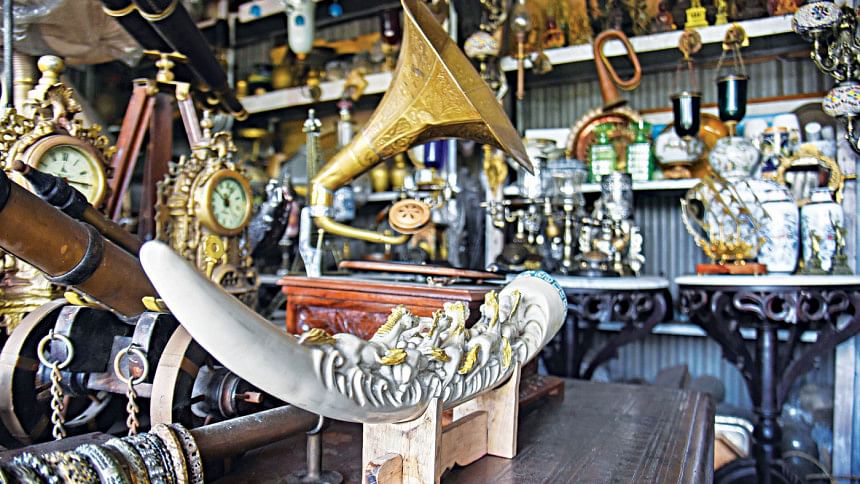
THE BHATIARI PULL
Collecting old artifacts is a hobby and sometimes old ship wreckage is the best place to look for retro vibes. In Bhatiari, Chattogram the entire street situated near the highway N1 is dotted with stores selling antiques from old ships.
"People do flock to Bhatiari to search for unique items that would add a statement to their home of collectibles. For example, marine sextants in wooden boxes are a collector's delight. The shops have shelves of ornamental wooden boxes of intact sextants, used in navigation to determine latitude and longitude," starts Mizanur Rahman Yousuf, a journalist by profession and a former antique dealer.
In fact, they are the hottest items on sale on the online shopping platforms, he adds.
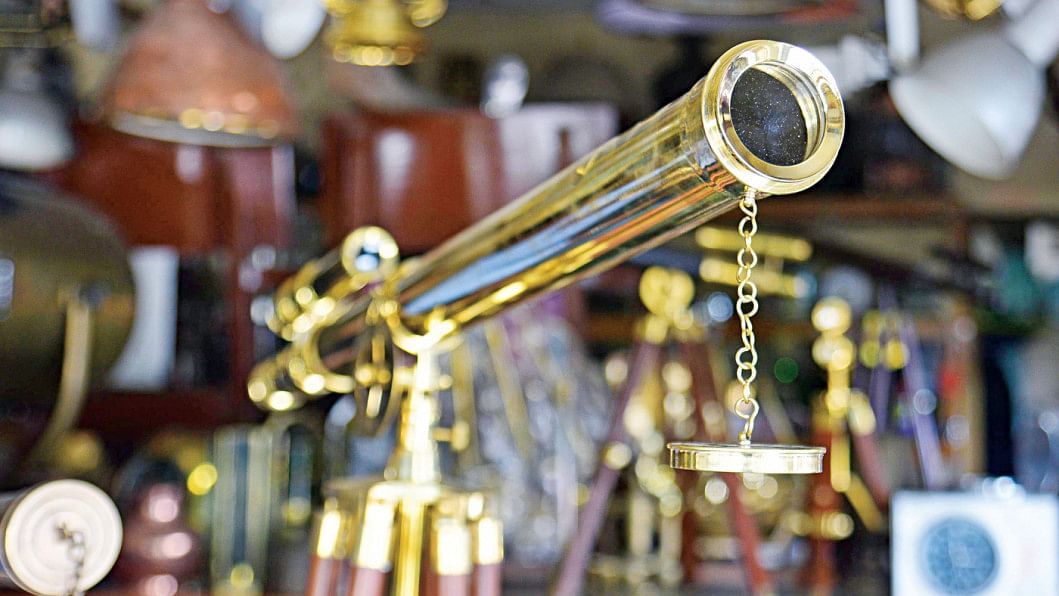
"Now, before putting them up for sale, the business experts buy in lots at the source, which are then brought by marine stores and sold to retailers. There are separate lots for marine items, brass items, furniture, kitchenware, tableware, so on and so forth. It is said that 96 percent of ship scrap is recycled. Though, in terms of antiques, these items are only 30 years old maximum, because it is mandatory to scrap a ship after 30 years of running; but they attract local and foreign tourists equally," Yousuf explains.
Brass favourites, an old coal iron, oil lamps, bells, and dongs are bought by weighing their weight in kilogrammes, then they are polished and resold. Ceramic and porcelain ware with a web of tiny cracks over its surface are very sought-after pieces for repurpose, as well. These bowls add a tag of charm to table décor as fruit bowls or floating candle holders.
Lifeboat oars are a collector's item, if you want to believe it. People paint them in happy pastel colours or intricate geometric designs and many upcycle them by using them as nameplates near the main entrance or as kitchen hook hangers or even as eccentric garden accessories.
"Tourists and collectors are drawn to Chattogram's ship breaking industry collectibles. It is an industry with a market value exceeding Tk 10,000 crore, but currently it is going through a stagnation due to the rising dollar price and margin rates imposed by banks," says Yousuf.
Every object is reusable and value adds to the economy. A mere example of the fact that the re-usage of 5,000 tonnes of ship furniture proves how it impacts the economy and environment. We do not need to cut down trees for making furniture," he says.
The ship-breaking industry in Bangladesh holds the top global position, but the industry faces a challenge in converting all ship recycling yards into green yards by 2025.
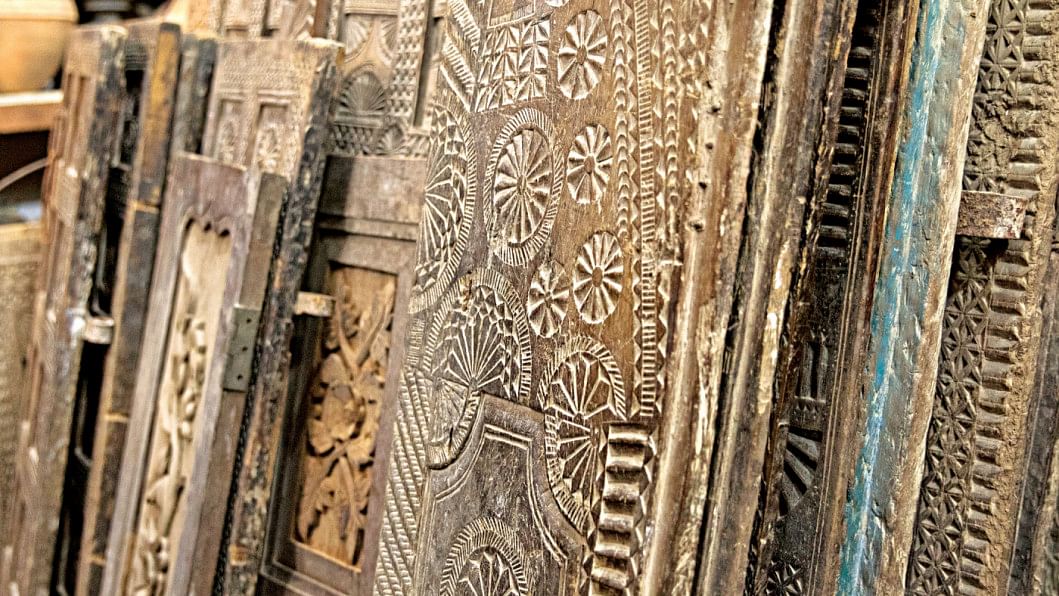
UPSCALING ANTIQUES
Not just the collectibles from ship breaking yards, Dhaka has its fair share of shops boasting antiques.
"If you pass through Gulshan DCC 2 market, the shops selling antiques just grab your attention; an old dresser or a bureau in teak wood would make a beautiful foyer table or an entryway table. With lace curtains drawn on the mirror, the dresser can serve as a writing table for guests, who missed you for being out. It can have a fountain pen, an ink pot, blue letter pads and envelopes and an old brass vase of freshly cut flowers, setting a décor tone for your home," says Nasira Mansoor, an interior consultant.
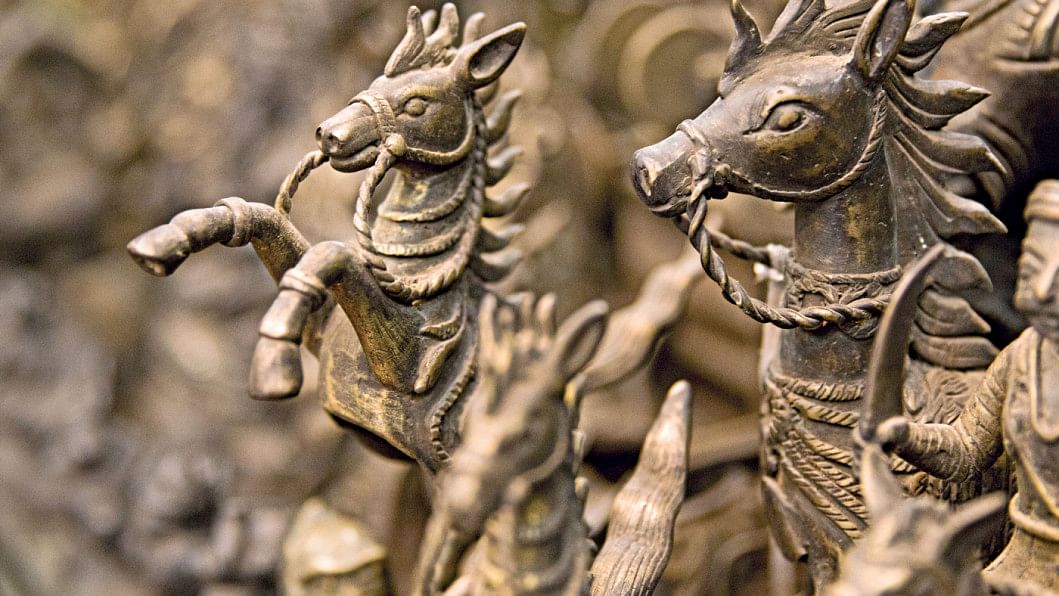
This vintage dresser with a mirror can be a versatile piece of furniture and can also be used as a statement piece in your drawing room with adopted styles of periods past. Just like an old easy chair with criss cross cane back support, adds a grand look to your wide veranda, rewinding you to the days when your great grandfather would sit in his quiet corner and listen to dramas and Rabindra sangeet on shortwave radio programmes.
An ornate palonka or zamindari antique bed, that has steps to get up on and is tightly tucked up with croquet or hand embroidered bedsheet and pillow cases will lend your bedroom an air of romantic period play theme.
With such antique pieces you can let your ideas run wild. The antique markets are like treasure-troves for people who love the time-worn period look. From tableware like old English porcelain bowls, plates and cups to cut glass candle holders, oil lanterns, door charms that protect from evil eye to rusted and dusty brass idols, dolls, decoration pieces; the shops are stuffed with antiquated things.
You cannot walk from one aisle to another without stepping on some fragile objects. Tea pots and chinaware dating back to the British rule that are stamped with Made in England or Holland labels and various sizes of cooking pots and other belongings of a lost generation are on display here.
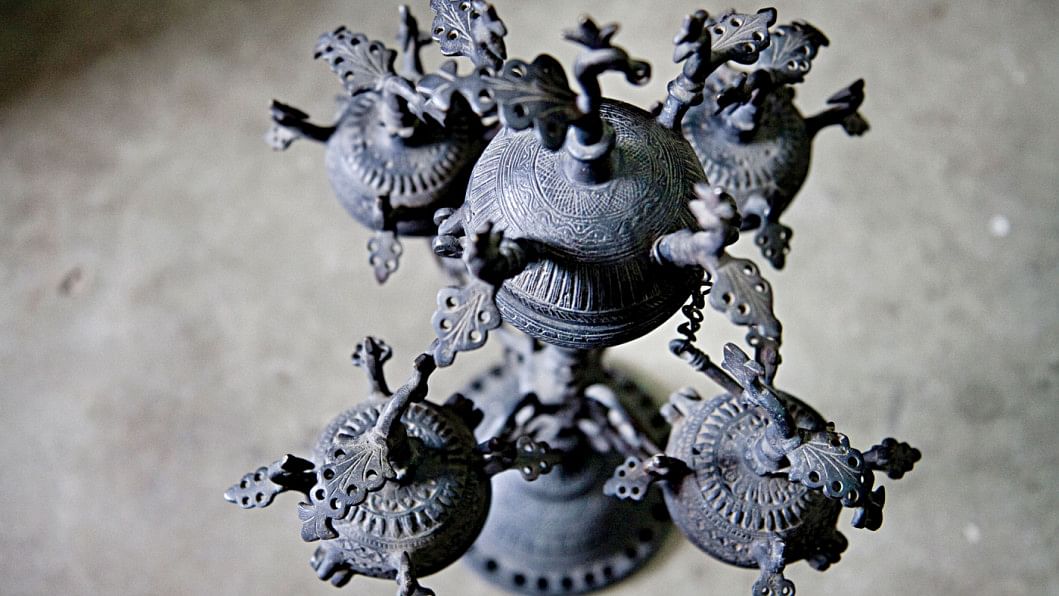
"Though Dhamrai boasts bell metal products, very rarely you will find an antique there. Their products are given an antique look but the area can be great for finding lower-end antiques and it's always worth a rummage," says Mansoor.
"The shops in Gulshan do carry some fine vintage stuff dating back roughly a hundred years or so after the British period ended. Rarity also factors in pricing, especially if it's a collectible in a particularly active market like antique coins, lamps, and glassware that sell regularly for surprising sums at such stores. These beautiful pieces of history are collected from zamindars who fell on bad patches, or old family heirlooms where the new owner is not interested in their new windfall, sell off," Mansoor talks from an experienced antique bargain hunter's point of view.
FROM THE ONE IN BUSINESS
Fahim Metal Handicraft, a traditional business selling brass, copper, bronze items in Rayerbagh, Jatrabari claims to be in this line of business for five generations now.
"I am one of the biggest antique dealers in business and I can say that it is very easy to be double crossed in buying such antique products. The market is full of new products that are washed in chemicals to achieve that antique, rusted look. Having said that, we do get hold of real vintage items collected from excavation sites or sold off by current owners," says NM Fahim Rahman, the current business head of the shop.
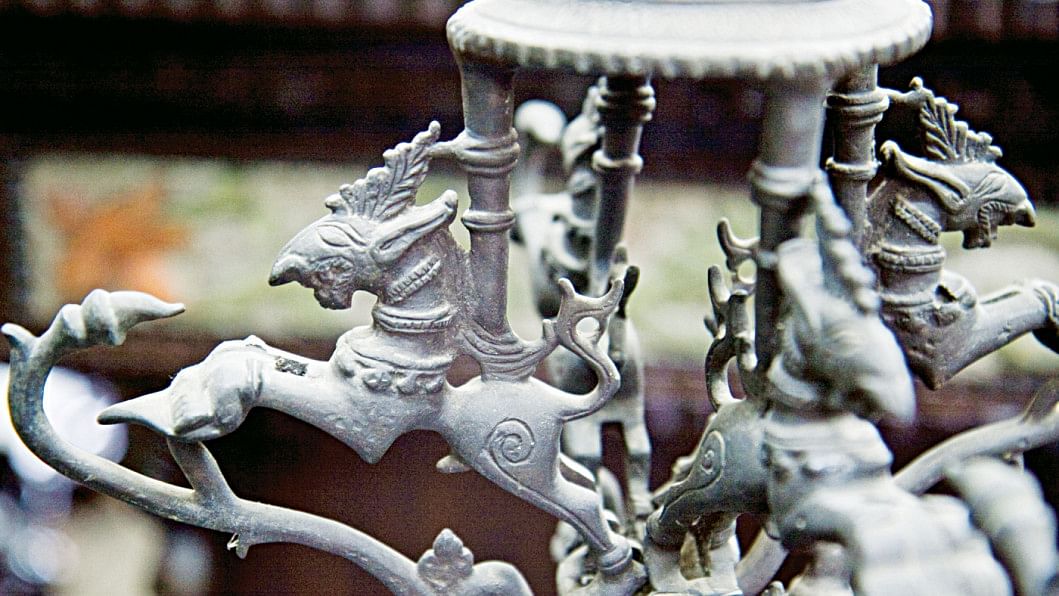
"We do not have products made of real copper in Bangladesh, we mostly used the alloy called bell metal or kasha to make kitchenware and dining ware. These were considered an investment in bygone times. Our markets of antique products are also selling Indian or Pakistani handicrafts in the guise of archaic heirloom products. Selling old items is a collector's game and before it goes to the real buyer, you must remember that it has changed a minimum of four to five hands. When a client asks us to collect something for them, we search for it within our commercial network or circle, thus this involvement of different stakeholders," he explains.
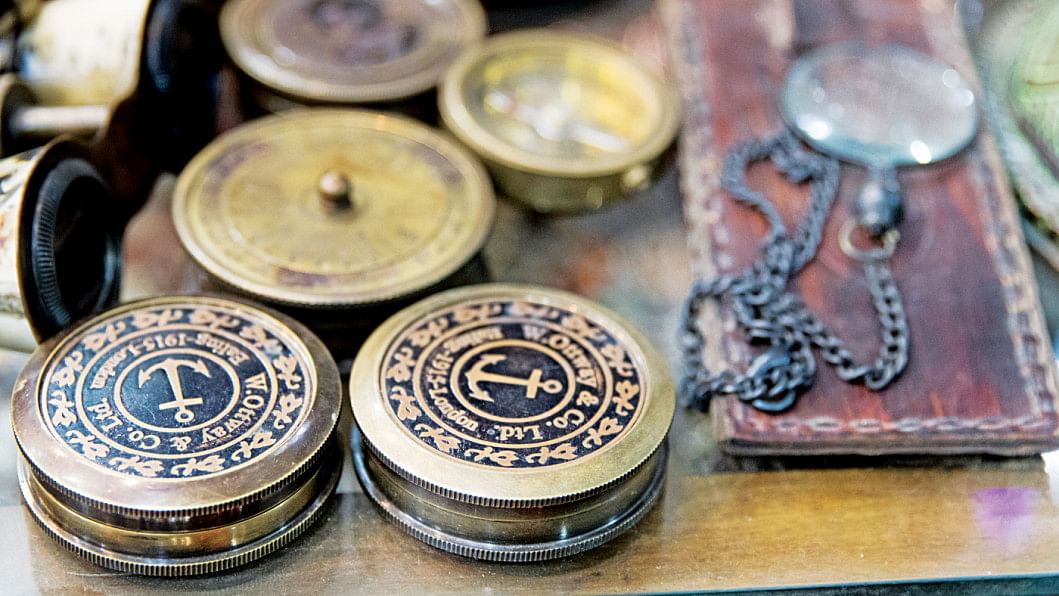
Mitford in Old Dhaka is the biggest hub of collectibles both imported and local. Recently a buzz has been created in the antique business, by people who can afford it, and they are opting for old-world aristocracy, as Fahim feels.
When upscaling is trending with a go green sticker on it, these items, holding aesthetic and old family significance, can be re-used in many ways. Antiques add grandeur to your home if used in an artistic way. You do not have to turn your home into a museum rather highlight a period piece for that subtle grace.
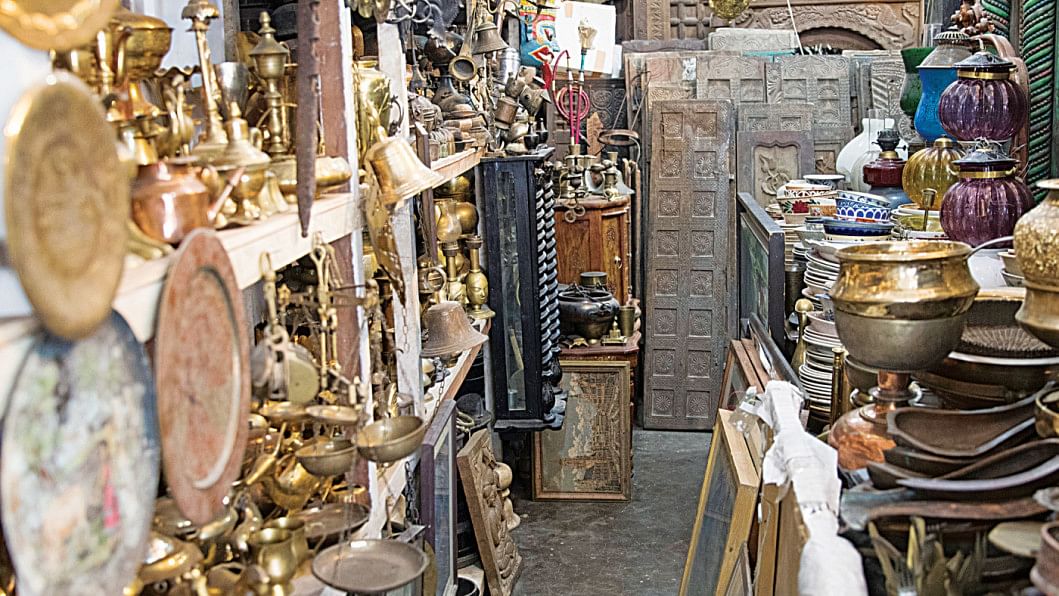

 For all latest news, follow The Daily Star's Google News channel.
For all latest news, follow The Daily Star's Google News channel. 





Comments